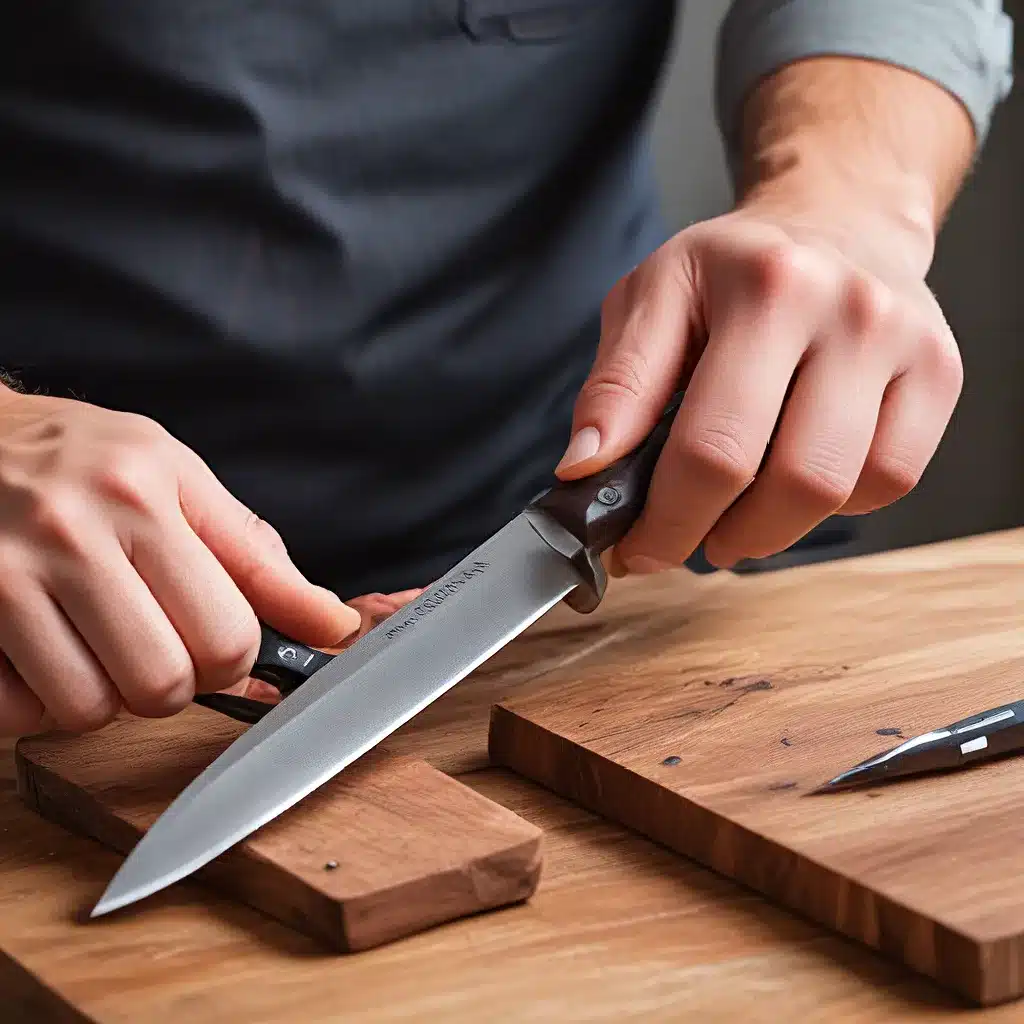
As a passionate home cook, I’ve come to appreciate the importance of maintaining the sharpness and integrity of my kitchen knives. A well-maintained knife is not only a pleasure to work with, but it also enhances the overall culinary experience and reduces the risk of accidents in the kitchen. In this comprehensive guide, I’ll share the tips and techniques I’ve learned to master the art of knife sharpening, ensuring razor-sharp edges for precision cutting and improved cooking outcomes.
Understanding the Importance of Knife Maintenance
In the bustling world of home cooking, the kitchen knife stands as the quintessential tool – a faithful companion in the pursuit of culinary excellence. Yet, as any seasoned home cook knows, maintaining the sharpness and integrity of these blades is no small feat. A dull knife can compromise both safety and culinary outcomes, leading to slippage, imprecise cuts, and frustrating kitchen experiences.
Regular knife maintenance not only prolongs the lifespan of your blades but also elevates the cooking experience to new heights. A well-sharpened knife not only enhances cutting efficiency but also reduces the risk of accidents in the kitchen. By investing time and effort into caring for your knives, you’ll cultivate a deeper connection to the art and craft of cooking, transforming the way you approach your culinary endeavors.
Mastering the Art of Sharpening
At the heart of knife maintenance lies the art of sharpening. While the prospect may seem daunting, mastering this fundamental skill is within reach for every home cook. Whether you choose to use sharpening stones, honing rods, or electric sharpeners, the objective remains consistent: to restore the blade’s sharpness and precision.
Understanding Sharpening Angles
Before diving into the sharpening process, it’s essential to understand the angle of your knife’s edge. For most Western-style knives, the typical range is between 15 to 20 degrees. Knowing this angle will help you maintain the blade’s optimal performance and ensure a consistent, razor-sharp edge.
Using Sharpening Stones
One of the most traditional and effective methods of sharpening is the use of sharpening stones. These versatile tools come in a variety of grits, from coarse to fine, allowing you to gradually refine the edge of your knife. Here’s how to use them:
-
Start with a Coarse Stone: Begin with a coarse-grit stone, typically in the range of 300-600 grit. Hold the knife at the appropriate angle and, with gentle yet deliberate strokes, guide the blade along the sharpening surface, ensuring uniformity and consistency across the entire edge.
-
Refine with a Fine Stone: Once you’ve established a consistent burr-like edge, switch to a finer-grit stone, usually around 1000-2000 grit. Repeat the sharpening process, focusing on maintaining the same angle and creating a polished, ultra-sharp edge.
-
Hone and Deburr: After sharpening, it’s important to hone the blade using a honing steel or ceramic rod. This simple yet effective technique realigns the edge, ensuring optimal performance between sharpening sessions.
Remember to practice patience and consistency throughout the sharpening process. Mastering this skill takes time and dedication, but the rewards of a precisely sharpened knife are well worth the effort.
Using Electric Sharpeners
For those seeking a more convenient sharpening option, electric knife sharpeners can be a game-changer. These handy devices automate the sharpening process, making it easy for even the most novice home cook to maintain their knives. When using an electric sharpener, follow the manufacturer’s instructions carefully, ensuring that you maintain the appropriate sharpening angle and avoid over-sharpening.
Honing and Honing Techniques
In addition to sharpening, honing plays a crucial role in knife maintenance. Often overlooked, this simple yet effective technique realigns the blade’s edge, ensuring optimal performance between sharpening sessions. Utilize a honing steel or ceramic rod, holding the knife at a slight angle against the honing surface. With controlled motions, draw the blade from base to tip, exerting gentle pressure to achieve the desired results.
Incorporate honing into your culinary routine, preferably before each use, to maintain the knife’s sharpness and precision. By nurturing this habit, you can ensure consistent cutting performance and elevate the quality of your culinary creations.
Proper Storage and Handling
Beyond sharpening and honing, proper storage and handling practices are essential to preserving knife longevity. Invest in quality knife blocks, magnetic strips, or sheaths to protect your blades from damage and ensure safe storage. Avoid storing knives in cluttered drawers or exposing them to excessive moisture, which can lead to corrosion and dullness.
When handling knives, exercise caution and mindfulness. Avoid using knives for tasks beyond their intended purpose and refrain from subjecting them to undue stress or force. By treating your knives with care and respect, you can extend their lifespan and optimize their performance for years to come.
Embracing the Journey of Knife Maintenance
Mastering the art of knife maintenance is a journey – one that requires patience, practice, and dedication. Embrace the process, experiment with different techniques, and refine your skills over time. Seek inspiration from culinary experts, online tutorials, and instructional guides to deepen your understanding and proficiency in knife maintenance.
Remember, a well-maintained knife is more than just a tool; it’s a testament to your commitment to quality and mastery in the kitchen. By investing time and effort into caring for your blades, you’ll not only enhance your culinary prowess but also cultivate a deeper connection to the art and craft of cooking.
For your blade sharpening or repair needs, consider reaching out to Herman Knives. Their team of experts is dedicated to helping home cooks and professionals alike maintain the integrity and performance of their knives.
So, sharpen your skills, hone your techniques, and embark on a journey of culinary discovery with confidence and precision. Your knives will thank you, and your culinary creations will reach new heights of excellence.


